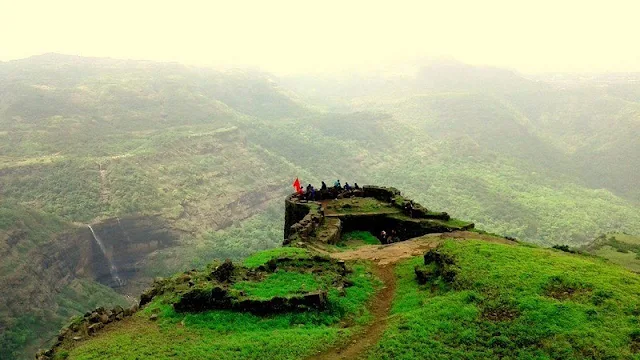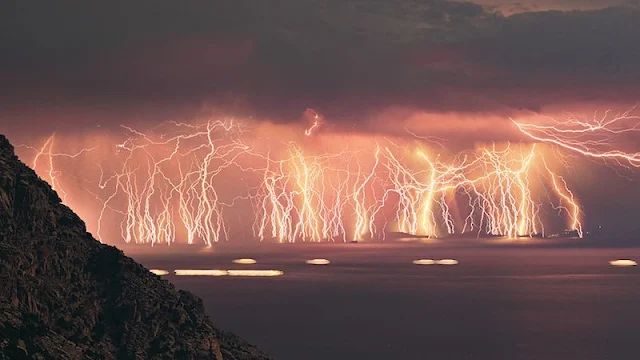The Hoia Forest, located near Cluj-Napoca in Transylvania, Romania, is one of the most mysterious and eerie forests in the world. It has earned a reputation as Romania's "Bermuda Triangle," thanks to its long history of strange occurrences, paranormal activity, and inexplicable phenomena. In this post, we will explore the forest's unique features, its enigmatic past, and some of the curious events that have made it a popular destination for adventurers and paranormal enthusiasts alike.
A Brief History of the Hoia Forest
The Hoia Forest covers approximately 250 hectares (617 acres) and is situated just outside the city of Cluj-Napoca, in the heart of Transylvania. The forest has been a source of local legends and lore for centuries. Its name is said to come from a shepherd named Hoia, who supposedly disappeared mysteriously in the area along with his sheep. This story is one of many that have contributed to the forest's eerie reputation.
In addition to this folklore, the Hoia Forest has a deep-rooted connection to the area's ancient history. It was believed that the forest was once the site of pre-Roman Dacian settlements. Today, its dense trees, twisted branches, and unusual formations make it a striking and unsettling location.
Forest's Reputation: Paranormal Activity
The Hoia Forest is best known for its reputation as a hotspot for paranormal and supernatural activity. Numerous witnesses have reported a variety of strange occurrences, leading some to believe that the forest is a portal to another dimension, while others argue it is the result of natural but unusual phenomena.
Some of the most common paranormal phenomena reported include:
Mysterious Lights: People have often seen strange, glowing orbs of light hovering above the forest floor or floating between the trees. These lights are often described as moving erratically and disappearing suddenly.
Apparitions: Ghostly figures or shadowy shapes have been spotted, including the spirit of a woman dressed in white. Many claim to have seen these apparitions in the early morning or late evening, when the forest is shrouded in mist.
Unexplained Voices: Hikers and visitors have heard disembodied voices, whispers, and even the sound of children laughing, but no one has ever been able to explain the source of these sounds.
Vanishing People: One of the most infamous stories is of a young girl who supposedly disappeared in the forest and was never seen again. The story, like many others, adds to the aura of mystery surrounding the place.
Strange Patterns and Crop Circles: There have been reports of unusual, circular patterns of vegetation within the forest, resembling crop circles, which some believe are the result of alien activity.
The “Dead Zone” – The Heart of the Hoia Forest
One of the most notable features of the Hoia Forest is the "Dead Zone," a particular area within the forest that is characterized by its twisted, gnarled trees and an unusually high amount of paranormal activity. The trees here have a distinct, unnatural appearance, often bent at strange angles or devoid of bark. This area is a focal point for those interested in the forest’s mysteries, as many visitors claim to feel an unsettling energy when they enter the Dead Zone.
The soil in this area is also thought to be magnetic, which some believe may interfere with electronic devices like cameras, GPS, and compasses. This has led to theories that the forest may be a hotspot for electromagnetic disturbances, contributing to the strange experiences that occur there.
Scientific and Skeptical Explanations
While many people believe the Hoia Forest is a hotbed for paranormal activity, skeptics argue that much of the strange phenomena can be explained by natural causes. Some possible explanations for the mysterious happenings in the forest include:
Electromagnetic Fields: The unusual magnetic properties of the forest could cause malfunctions in electronic devices, resulting in strange readings or disorienting experiences. This could also explain some of the “glowing orbs” that visitors have seen.
Psychological Factors: The mind is highly suggestible, especially in places where there is a heavy atmosphere of legend and folklore. Some visitors may experience hallucinations or interpret ordinary occurrences, like shadows or reflections, as paranormal events.
Environmental Factors: The dense forest, combined with the misty conditions common in the area, can create optical illusions that make trees and other objects appear more sinister than they really are. Additionally, the sound of the wind rustling through the trees can sometimes be mistaken for whispers or voices.
Hoia Forest Today: A Popular Paranormal Destination
Despite its unsettling reputation, the Hoia Forest has become a popular destination for both thrill-seekers and paranormal enthusiasts. Tour operators in the Cluj-Napoca area offer guided tours of the forest, during which visitors can learn about the legends and experiences associated with the location. Some tours even offer "night hikes," where people can explore the forest under the cover of darkness, hoping to experience something out of the ordinary.
Beyond its paranormal reputation, the Hoia Forest is also a beautiful natural area. It is home to a diverse range of flora and fauna, making it a favorite spot for hikers, birdwatchers, and nature lovers. In particular, the forest is known for its variety of mushrooms, which can be found growing in the rich soil of the forest floor.
The Hoia Forest and the Search for Extraterrestrial Life
One of the more unusual theories surrounding the Hoia Forest is its possible connection to extraterrestrial life. The forest’s magnetic anomalies, combined with the strange lights and patterns reported by visitors, have led some to speculate that UFOs or alien spacecraft may be visiting the area. While there is no definitive proof, the idea of the Hoia Forest being a place where extraterrestrial activity occurs adds to the allure and mystery of the location.
In 1968, a Romanian biologist named Alexandru Sift captured an unusual photograph in the forest, which many believe to be a UFO. This photograph has fueled speculation about the possibility of extraterrestrial activity in the forest and remains one of the most compelling pieces of evidence for those who believe in otherworldly encounters.
Planning Your Visit to Hoia Forest
If you want to explore the mysteries of the Hoia Forest for yourself, there are several ways to do so:
Guided Tours: Many local tour companies offer guided tours that explore the forest’s paranormal history. These tours typically include visits to the Dead Zone and other well-known areas where strange occurrences have been reported.
Self-guided Exploration: The forest is open to the public year-round. Visitors can hike the trails, enjoy the natural beauty, or venture into the more mysterious parts of the forest on their own. If you choose to explore on your own, be sure to stay aware of your surroundings and be cautious around the dense, overgrown areas.
Photography and Night Hikes: For those interested in capturing the eerie atmosphere of the forest, there are opportunities for photography, especially during the misty mornings and evenings. Some even choose to hike in the dark, hoping to catch a glimpse of the strange lights or shadows that have been reported.
Conclusion: The Hoia Forest’s Enigmatic Appeal
Whether you are a skeptic, a paranormal enthusiast, or someone who simply loves exploring strange and unusual places, the Hoia Forest is undeniably fascinating. Its rich history, combined with the eerie atmosphere and strange phenomena, make it a must-visit location for anyone intrigued by the unknown. Whether you're there to enjoy the beauty of nature or to search for evidence of the supernatural, the Hoia Forest is sure to leave a lasting impression.















































